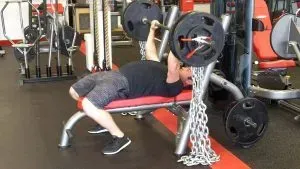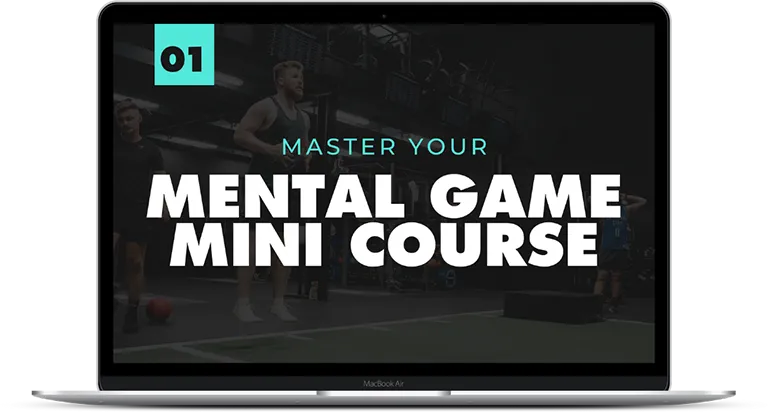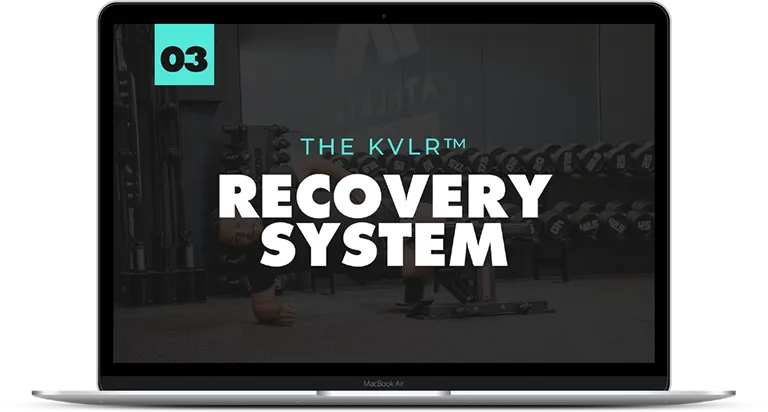Athletes Authority
Latest Blog & Insights

Principles Over Methods: The Role and Importance of Accommodating Resistance and Overspeed Eccentrics
Accommodating Resistance
Have you ever thought that if you can just get through that sticky point, you can always get the rep? That is because the amount of force you can produce is position specific. What that means is that at certain points in the range of motion, you could be mechanically weaker or stronger in relation to a different point along the way. In the vast majority of barbell lifts, you are normally stronger as you near the end of the lift.
We’ve all seen ‘that guy’ who quarter squats a tonne of weight. He can only squat that amount of weight because he is working in an advantageous joint range.
He’d be weaker in a half squat, and even weaker in a full squat.
Therein lies the critical problem.
When you select a weight, you are selecting the weight that you can overcome at the weakest point of the lift. Therefore, the stronger portions of the lift aren’t stimulated to the same degree, relative to the weakest points.
If you remember previously to our formula F=ma (force equals mass times acceleration), one solution to this may be accelerating the bar as fast as possible during the whole lift (which we recommend). However, you may also remember that your brain has to decelerate the bar, otherwise you put yourself at risk of hyper-extending your joints under load.
So not really a solution.
I first came across the accommodating resistance method when I first watched a crazy powerlifter from Ohio called Louie Simmons on YouTube. I remember my first impression – a mad scientist who clearly knew his stuff. He is the owner and founder of Westside Barbell, and his principles and methods, adapted from the likes of Verkhoshansky (the Russian Father of plyometrics), will leave a legacy that stands the test of time.
If you haven’t read the Westside Book of Methods, we’d highly recommend getting through it. In parts of the book, it looks more like mad ramblings, but nevertheless, the content is golden.
Louie breaks his training for powerlifting into two parts, the max effort method, and two, the dynamic effort method.
It is the latter that is now known as accommodating resistance.
Louie realised that to overload the entire range of motion, the solution would have to vary the resistance so that there was more resistance as the joint angle became more advantageous, and less resistance when the joint angle was disadvantaged.
In his first iteration, Louie used chains. At the bottom of the lift, the chains would rest on the floor as dead weight, not contributing to the load on the bar. At the top of the lift (squat/deadlift/bench/overhead press) they would be off the floor, and thus contributing to the total weight at the top of the repetition.
This was a giant step forward, fitting for the giant of a human that is Louie Simmons.
However, the chains didn’t solve the issue of deceleration, as they still acted as a dead/static weight, and remember, this is the dynamic effort.
Enter resistance bands.
Who would have thought that thick pieces of rubber latex would revolutionise our training practices. Well they have, and they did, and they aren’t going anywhere, and because of that, they deserve mention in this blog.
Rubber bands, that can add in excess of 50kg of tension at full tension, are attached to the bar ends and to an object/attachment on the floor. At the bottom of the lift, the bands are loose, providing little to no tension, but at the top, and as you’d progress toward a mechanically advantageous position, the tension dramatically increases.
The added benefit is the bands, if they had a will, would willingly want to pull the bar back down. This means that it is acting over and above what gravity can produce by itself, and essentially, decelerate the bar at the end of the movement for you. This way, you can still exert maximum force on the bar throughout the whole range, without the fear of hyperextending your joints.
AR method has far reaching benefits to athletes, including:
Overloading the last portion of the range of motion that is often the most in-demand in sports. You get the benefit of choosing a raw load that is specific for your weakest part of the lift, but get to optimise the stimulus to the range that is most advantaged mechanically.
Joint injuries are significantly reduced. The reduction in joint shock that the bands provide as well as the extra eccentric stress is a proven solution to tendonous injuries.
Bands allow you to constantly accelerate the load – the same way you’d treat an object or body in sport. You wouldn’t swing a golf club hard initially, only to pat the ball during the down stroke. Nor would you run at an opposition player max gas, only to slow down to a halt upon impact. The idea of ‘moving quickly, always’ remains true here.
Trains a portion of the force velocity curve that is often neglected in resistance training – it’s easy to go heavy with traditional barbell exercises (high force/low velocity), and go light with jumps and medball work (low force/high velocity) but the sweet spot in the middle group is often left untapped. AR in the moderate intensity range is a great solution to this common programming problem.
We use accommodating resistances in a few different ways with our athletes.
During season to reduce gross loading: Seasoned athletes with long competition calendars know what it feels like to have to grind – their bodies are sore, their motivation is waning, and they are probably playing neural catch up. Accommodating resistance with relatively light loads (50-60% 1RM) for 8 x 5 reps (30-45 total) is a great way to keep concentric power high while unloading the joint tissues and recovering the central nervous system. This is especially beneficial to help maintain strength during season when training volumes in the gym start to drop.
As a contrast method: although are going to talk about contrast training shortly, but in summary, we use AR as part of a superset or tri-set with a major lift. Eg: Heavy Incline DB Press (high force/low velocity), Banded Bench Press (mod velocity/mod force), and medball Chest Toss (low force/high velocity). Another way to do this would be to do a high force/low velocity agonist with a mod force/mod velocity AR antagonist (eg heavy bench press and banded prone pulls).
As part of a speed day: for some athletes, we may program a high velocity day, which may include cleans, box jumps, medball work etc. We often integrate AR exercises at a moderate intensity (50-75% 1RM) in a session like this as well.
Overspeed eccentrics.
This is another method pioneered by the mastermind of powerlifting Louie Simmons. In his ‘Book of Methods’, Louie describes a form of eccentric training that maximises strength gains via the accumulation of kinetic energy not dissimilar to plyometric training that we’ve discussed in an earlier blog.
Similarly to plyometrics, Louie recommends a fast yielding phase, to maximise the elastic and reflex energy that can be transferred into the concentric portion of the lift. Just like a short contact time during a landing from plyometric training, a rapid transition from eccentric to concentric is needed. Simmons recommends using bands to help ‘rip you down’, which will also couple with adding the kinetic energy developed. We see this method being most valuable during high velocity squats and bench, where speeds are in excess of 0.75m/s. In fact, the method of overspeed eccentrics is best couple with AR training when the intensity of training is between 50-60% 1RM.
Want to improve your speed and agility on the field of play? Click here to learn more
Our resources

Master your mental game Mini Course
Discover the mindset strategies of the World’s Greatest Athletes so you can turn your mind into a weapon of performance.

THE ATHLETES AUTHORITY RECOVERY SYSTEM
Performance = fitness – fatigue. Reduce your fatigue and recover faster with our 3-step recovery system.
SYDNEY LOCATION
© 2023, Athletes Authority | All Rights Reserved
Website & Marketing Powered By Gymini

